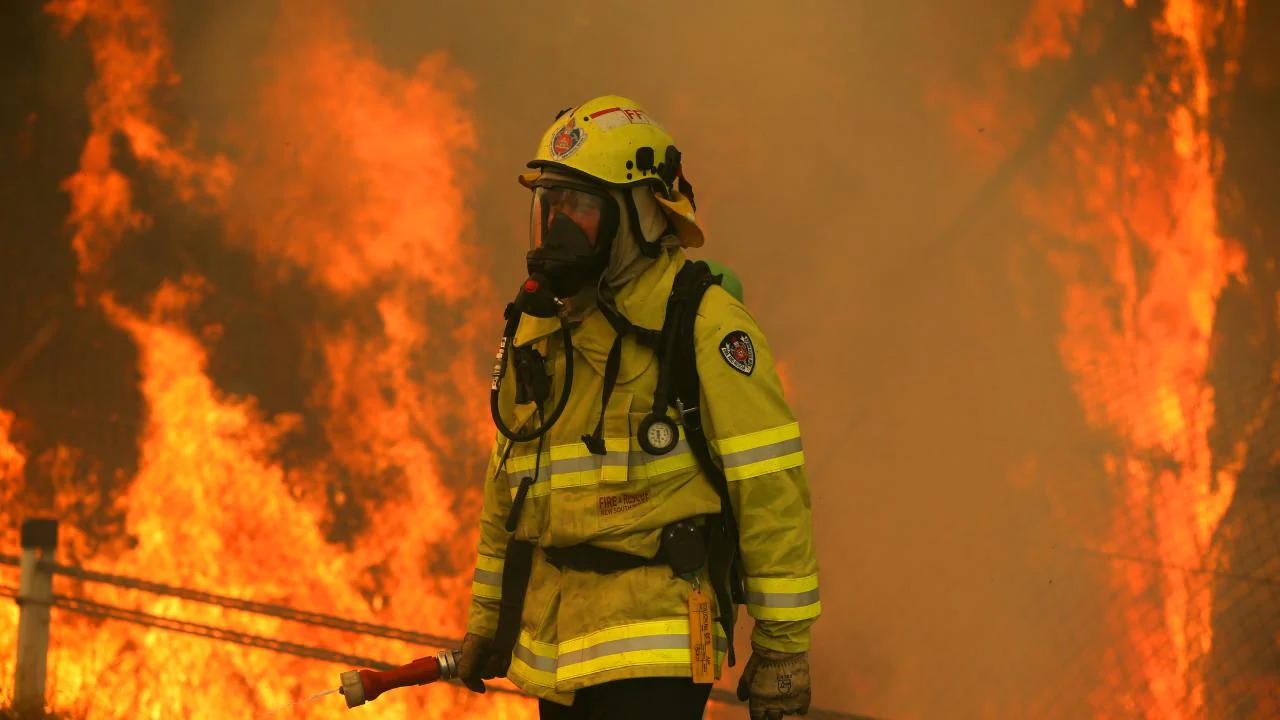I spent a lot of my childhood camping and hiking around the Otway ranges in the Australian state of Victoria’s south-west. This was one of the main regions devastated by the horrifying Ash Wednesday fires. I well recall the dense pile-up of fuel loads in the years before. The Otways were dotted with bush retreats (baches) surrounded by dense forest practically up to their doorsteps. It was paradisal – and deadly dangerous. All that fuel was bound to go up one day, and it did, in a shocking conflagration that is still one of Australia’s worst fires on record.
Was a similar build-up of fuel loads the cause of the current devastating bushfires in Queensland and NSW? Greens angrily deny it – preferring to blame their favourite bogey, climate change – while many others are convinced that it is. Who’s right and who’s wrong will out, eventually. Meanwhile, even the pro-environment hippies of Australia’s hippy capital, Nimbin, are lining up against the Greens.
The greenies have a lot to answer for over the incendiary state of the Australian bush. This is the view of Michael Balderstone, hemp candidate, deep environmentalist and leading figure in the Nimbin community, which is now beset by fire. “They (greenies) own it,” Mr Balderstone said. “The Greens have to cop it on the head, they have been obsessed with no fires and no burning.”
Mr Balderstone says the lessons from indigenous land managers have been forgotten.
Other Nimbin locals are also blaming poor forest management.
Des Layer has for 30 years ridden his horses through hills now being ravaged by fire. For decades he has watched the structure of the bush change from what he says is poor logging and lax management.
Before the area became national park, Mr Layer said, he would get permits to collect firewood from the state forests. Since the national park was declared there had been no permits issued.
“It has just been building up,” he said.
It’s a grim irony that the area has long been an epicentre of environmental activism.
A generation of locals, raised on forest protest, are being forced to confront some tough truths about forest fuel loads and management. Communities that have been on the frontline to stop logging and expand national parks are seeking refuge as fire threatens to consume their homes.
Protesters Falls near Terania Creek, the site of Australia’s first environmental blockade in August 1979, is surrounded by an out-of-control blaze in the Nightcap National Park. Tuntable Creek community, a free-spirited community that grew from Nimbin’s counter-culture movement of the 1970s, was one of the first settlements to be evacuated.
Michael Crichton argues in State of Fear that “wilderness” often needs to be managed – but when it is, it is usually managed badly. Australian historian Bill Gammage, in his The Biggest Estate on Earth, argues that the Australian landscape was the product of tens of thousands of years of indigenous management – overwhelmingly by fire.
Certainly, the dense bushland which many now regard as “natural” appears to be very far from what greeted the first Europeans to explore Australia. Time and again, explorer’s journals describe the landscape of Australia’s eastern seaboard as “park-like”: open grasslands dotted with widely-spaced trees.
The problem is that modern Australians are still learning how to manage the “natural” landscape. First, indiscriminate logging and later, the opposite extreme of forest protection.
Even among hippies bigger questions are being asked about park management and the extraordinary fuel loads that have been allowed to build up for more than a decade.
Poor logging practices have changed the forest’s ability to cope with fire. First the fire-retardant edges were lost and then the high-value canopy trees. With the big trees gone, the humidity of the forest was reduced, the canopy was opened to allow palms to grow and then drop dead fronds into the undergrowth. Extended dry conditions have resulted in a tinderbox of lantana and weeds in an area that has not seen a significant fire for half a century.
Mr Layer believes the solution should have been selective logging but “you can’t trust these people to go in with chainsaws to do it sustainably” […] Mr Layer has been taking action for his own property. He has spent winter slashing and cleaning up the property, which has 20 dams. He hopes he’s done enough.
https://www.theaustralian.com.au/nation/politics/hippies-of-nimbin-admit-bush-got-too-wild/
Prior to the disastrous Canberra bushfires of 2003, local green outrage was stoked by an enormous break bulldozed through the surrounding hills. When large swathes of the “bush capital” were ravaged by fire, that break was one of the few places where the fire front was arrested.

